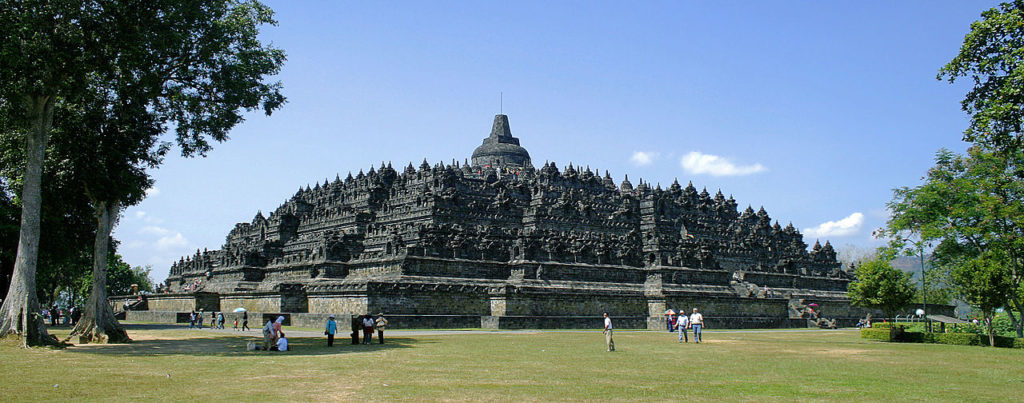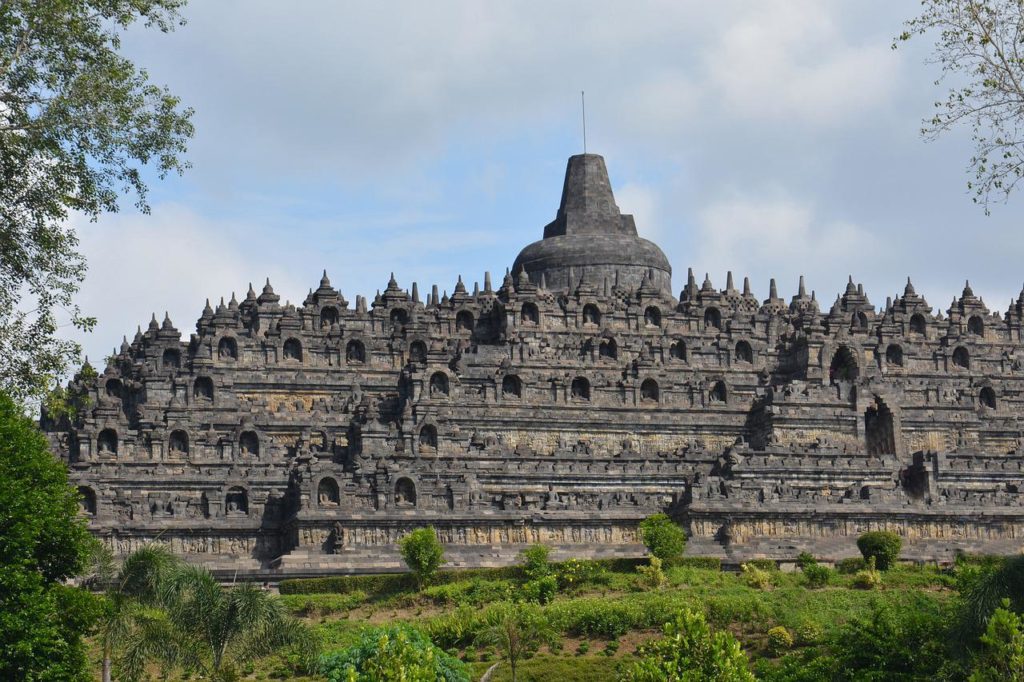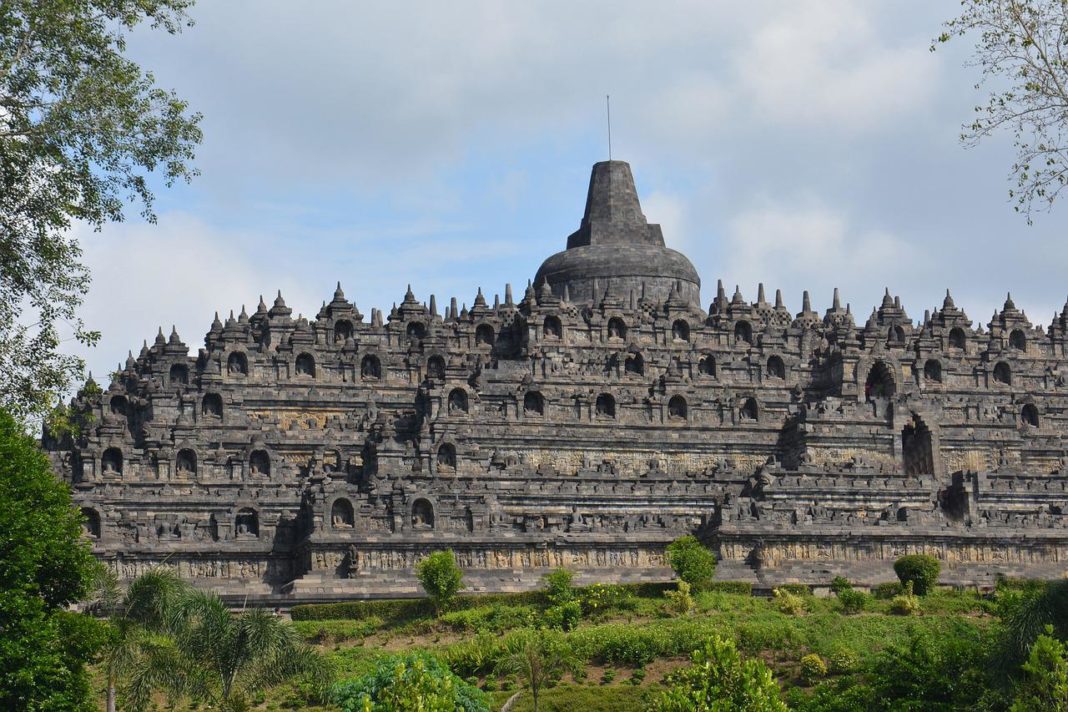The temple consists of nine stacked platforms, six square and three circular, topped by a central dome. It is decorated with 2,672 relief panels and 504 Buddha statues. The central dome is surrounded by 72 Buddha statues, each seated inside a perforated stupa. Borobudur in Indonesian means “Buddha tower on a high hill.” The entire tower comprises 300,000 stones, built on a square plan of 2 500 m2 wide, following the model of a mandala- la, which is a diagram of the Tibetan Buddhist concept of the universe.
 Built in the 9th century during the reign of the Sailendra Dynasty, the temple design follows Javanese Buddhist architecture, which blends the Indonesian indigenous tradition of ancestor worship and the Buddhist concept of attaining nirvāṇa.
Built in the 9th century during the reign of the Sailendra Dynasty, the temple design follows Javanese Buddhist architecture, which blends the Indonesian indigenous tradition of ancestor worship and the Buddhist concept of attaining nirvāṇa.
 After the fall of the Sailendra Dynasty, the temple was also abandoned and forgotten for 10 centuries. In 1814, the Dutch colonial government in Indonesia dispatched a delegation of European scientists led by Sir Thomas Stamford Raffles to conduct research and restore the temple. By 1970, the Indonesian government and UNESCO had completed many restorations with the assistance of 600 famous restorers over a 12-year period.
After the fall of the Sailendra Dynasty, the temple was also abandoned and forgotten for 10 centuries. In 1814, the Dutch colonial government in Indonesia dispatched a delegation of European scientists led by Sir Thomas Stamford Raffles to conduct research and restore the temple. By 1970, the Indonesian government and UNESCO had completed many restorations with the assistance of 600 famous restorers over a 12-year period.
After being restored, Borobudur Temple once again became a place for Buddhists to worship and pilgrimage. Once a year, Buddhists in Indonesia will celebrate Vesak at the temple. This is also the place that attracts tourists the most in Indonesia.
According to Wikipedia.














